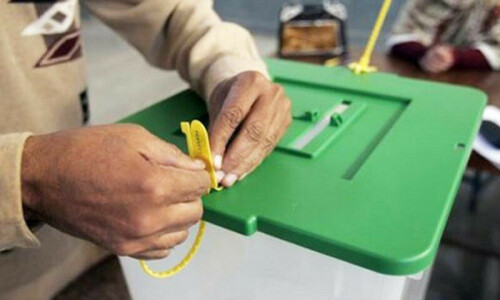A high court directive banning the excavation of coal and other minerals within a 600-yard radius of a hillock in district Chakwal on which the ruins of a temple-fortress stand may be too late to save the historic Hindu structure.
Built in the 10th century AD, Malot, one of five temple-fortress complexes dotting the Salt Range, has been described as the “prettiest” of the lot because of the synthesis of Kashmiri architecture and Greek tradition. After a millennium of minor geological changes, the hill upon which Malot stands is riven with narrow chasms. But recent coal-mining and cement factory activity near the ruins have aggravated matters. Some experts believe the only way to save and preserve Malot may be to shift it to safer ground. This method of preserving a building is not new as the reassembled building housing Karachi's Indus Valley School of Art and Architecture indicates.
If shifting Malot brick by brick is the best way to preserve it, the site most suited for its reassembly is perhaps Katas, the biggest and most significant of the five temple-fortress complexes in the Salt Range. Comprising a group of seven ancient temples, Katas has been the focus of India-Pakistan cooperation in recent years as archaeological experts from both countries worked together to renovate and conserve the site. Reports have been circulating for some time now that Pakistan is considering the nomination of Katas as a World Heritage Site. Better still, all the temple-fortress complexes in the Salt Range should be nominated for the status. This would help facilitate the preservation of the whole lot of temple-fortress complexes which Al Biruni had visited and written about.











































